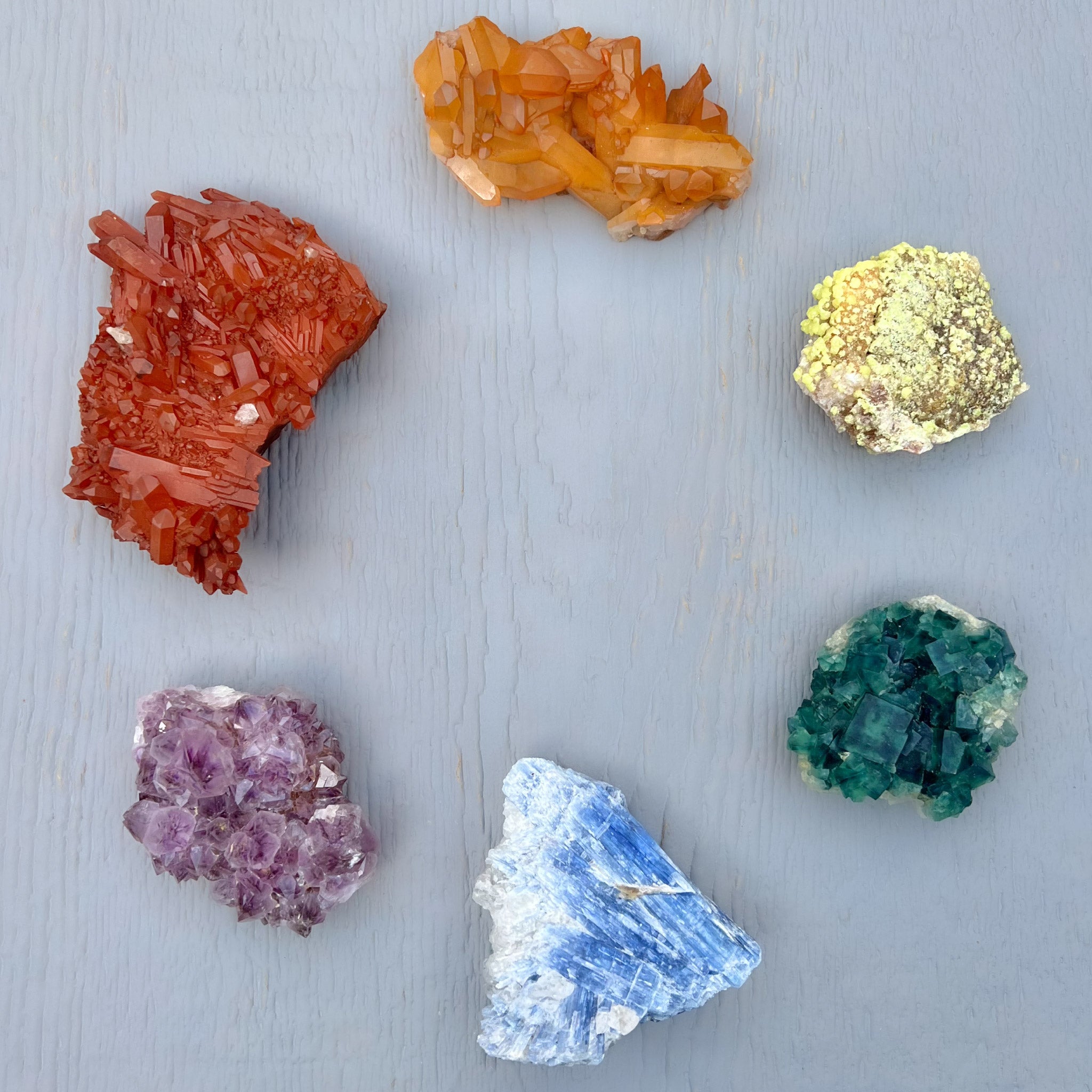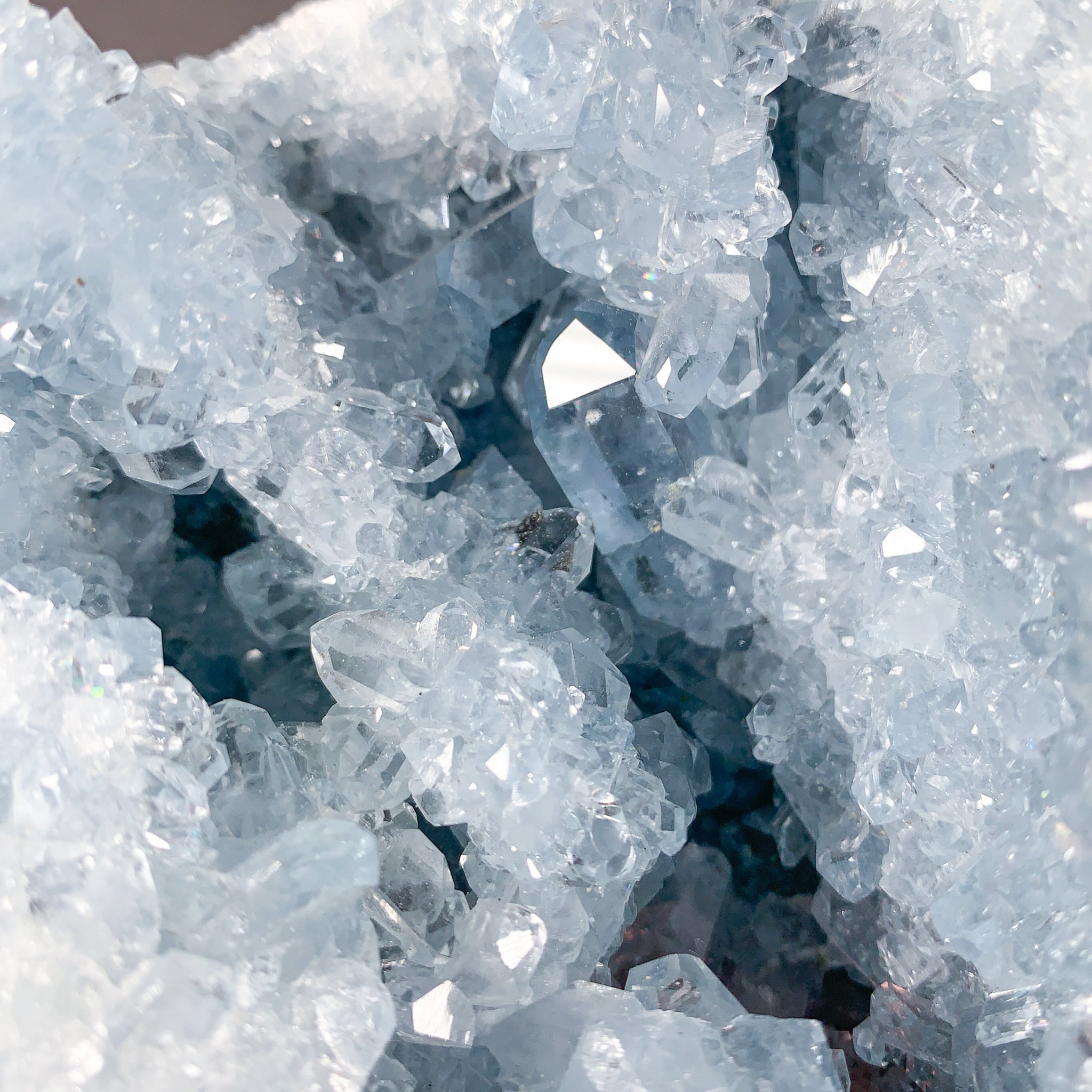While you may be familiar with individual mineral names and be able to identify them based upon their general shape and color, there is another important classification of minerals based upon their chemistry. The building blocks of these minerals is what groups them into the categories below. So lets take a look at the different mineral groups, what they are, and how they are classified!

What is a Mineral Classification / Group?
With thousands of different minerals out there, it is beneficial to classify them into smaller groups based upon their chemical composition and internal structure. These two factors represent the essence of minerals as well as determine their physical properties such as mineral color and shape.
So lets take a look at the chemical composition of minerals:
Chemical Composition of Minerals
Minerals are divided into groups or classes based upon their chemistry and the dominant anion or anionic group (ex: sulfides, silicates, oxides, etc.). Minerals which have the same anion or anionic group often have similar characteristics and tend to occur in the same or similar geologic environments to one another.
What are the Mineral Classifications / Groups?
The following is a list of the broadest classifications of mineral groups. They are as follows:
Native Elements, Sulfates, Sulfides, Oxides / Hydroxides / Halides, Carbonates, Phosphates, Borates, Sulfosalts, and Silicates.
So let's take a look at a few of the most common mineral groups you'll find on the market, and explore a little deeper into their classification.
Native Elements
Native elements are those elements on the periodic table which can occur naturally or in their "native" state without being combined with other elements. For example, you could have what is called Native Copper or pure copper Cu, without any other elements present. It has the ability to form or crystallize without the presence of any other elements.
As soon as another element is present with Cu, it would no longer be considered a Native Element. For example, with the addition of Oxygen in the chemical composition you could get Cu₂O or Cuprite which is its own mineral and not a Native Element.
The Native Elements are typically divided into metals, semi-metals, and nonmetals.

Native Metals
Some common Native Elements you may be familiar with are the Native Metals such as Gold, Silver and Copper. Typically these metals have cubic / isometric shapes or hexagonal shapes.
Native Semi-metals
Examples of Native Semi-metals include Antimony, Arsenic and Bismuth. While many rock collectors are familiar with Bismuth, the specimens seen on the market are almost universally laboratory grown. Typically the Native Semi-metals have more complex geometric forms.
Native Non-metals
Some common examples of Native Non-metals include Sulfur, Graphite and Carbon. Similar to the Native Semi-metals, the Native Non-metals often have a more complex shape than the Native Metals.

Sulfates
The Sulfate group is characterized by compounds of one or more metallic elements with the sulfate anion (SO4)2-. Some Sulfate minerals are found in evaporite deposits, where mineral-rich waters have evaporated allowing the minerals left behind to crystallize. Examples of evaporite minerals in this group are Anhydrite and Gypsum or Selenite. Others such as Barite and Celestite typically form in sedimentary rocks and are mined for the preparation of metal salts for industrial purposes.

Sulfides
Sulfides are classified by simple compounds of one or more metallic elements or semimetals with a nonmetallic element, typically Sulfur. There is a general formula for the sulfides XmZn where X represents the metallic elements and Z the nonmetallic element. For example, Galena's chemistry is PbS which is the combination of the metallic element Lead (Pb) and the nonmetallic Sulfur (S). The elements Selenium, Arsenic and Tellurium may substitute for the Sulfur atom in the Sulfides formula.
Many minerals in the Sulfide group represent important ore minerals. For example those containing Zinc (Sphalerite), Lead (Galena), Iron (Pyrite).
Most sulfide minerals are easily altered by weathering and exposure to air and water. These water-soluble Sulfide minerals may then be carried deep underground, with heated groundwater where they may later be redeposited in a process known as secondary enrichment. Sometimes also referred to as Sulfide enrichment, these redeposition events can result in rich deposits of lead, zinc, copper and other metallic ores.
Some common Sulfides are Bornite, Galena, Sphalerite, Chalcopyrite, Covellite, Cinnabar, Realgar, Orpiment, Stibnite, Pyrite, Marcasite, Arsenopyrite.

Oxides / Hydroxides / Halides
Oxides
This group of minerals generally occurs as "accessory minerals" in which oxygen is combined with one or more metals in a geologic deposit. Some of the most important metal ore minerals are found in this group, such as Iron-rich Hematite and Pyrolusite rich in Manganese. Other minerals associated with this group are: Corundum (Ruby, Sapphire), Cuprite, Hematite, and Rutile.
I'd like to mention that while Quartz (SiO2) is an Oxide, it will be discussed in the Silicates group where it is more predominantly classified.
Hydroxides
The Hydroxide group is classified by the presence of a compound of metallic elements with water (H2O) or hydroxyl (OH)-. Typically Hydroxides are softer than the other Oxides. Some minerals associated with this group are Brucite, Limonite and Goethite.
Halides
The Halide mineral group consists of those minerals characterized by the dominance of the electronegative halogen ions Chlorine (Cl-), Bromine (Br-), Fluorine (F-), and Iodine (I-). For example, NaCl (sodium chloride) is mineral Rock Salt. If you were to lick a sample of Halite (rock salt), it would taste exactly like table salt you would find in the kitchen.
Many Halides are water soluble, meaning they dissolve easily in water, and are therefore typically found crystallized in arid regions. However, some, Halides such as Fluorite, are not water soluble, but typically occur in the isometric or cubic crystal system. Some common mineral examples of Halides include Halite, Atacamite and Fluorite.

Carbonates
The Carbonate mineral group contains minerals with the Carbonate ion (CO3)2- compounded with one or more metallic elements or semimetals. Some important and abundant minerals occur in this group including Calcite, Aragonite and Dolomite. The copper-carbonates such as Azurite and Malachite are the next most common, with Cerussite, Rhodochrosite, and Smithsonite being much less abundant but equally as beautiful!

Silicates
The last but probably most important mineral group, the Silicates! Nearly all the igneous rock-forming minerals are Silicates, representing over 90% of the Earth's crust! The glass, brick, stone and concrete used to construct the buildings we live and work in are either Silicates or largely comprised of Silicates. And if 90% of the Earth's crust is Silicate mineral-bearing, then most of our food is also grown in Silicate-bearing soil.
What classifies the Silicate group is the Silicate atomic structure, the tetrahedron. The Silicate tetrahedron includes one Silicon atom surrounded by and bonded to four equally spaced Oxygen atoms, each at the corner of a tetrahedron (SiO4). The number of and type of linking present in the silicon-oxygen tetrahedron determines the structure in which the Silicate forms such as tectosilicates, cyclosilicates, etc.
Some Silicate minerals have Silicon centers that are replaced by other elements such as Iron, Manganese, Sodium, Calcium and Aluminum. There are TONS of Silicate minerals out there, far too many to list. Here are a few prominent examples: Quartz, Chalcedony, Opal, Garnet, Pyroxene, Amphibole, Kyanite, Topaz, Mica including Muscovite, Biotite and Lepidolite, Feldspars including Labradorite, Amazonite, Feldspar, Danburite, Sodalite, Stilbite, Analcime, Apophyllite, Actinolite, Hornblende, Diopside, Spodume such as Hiddenite and Kunzite, Rhodonite, Chrysocolla, Shattuckite, Dioptase, Benitoite, Beryl including Aquamarine, Emerald, Morganite and Heliodor, Tourmaline, Hemimorphite, Zoisite, Epidote, Vesuvianite, Olivine (Peridot), Kyanite, Topaz, Staurolite, Prehnite and Datolite.

Conclusion
As you can see, due to the literally thousands of minerals out there, it is important to classify them into smaller groups based upon their chemical composition and crystal structure. This helps both geologists and collectors identify similar mineral types and their distinguishing characteristics. Now just to find enough space in the house to collect them all....Enjoy!




